By Patricia Aufderheide AND Bedatri D. Choudhury
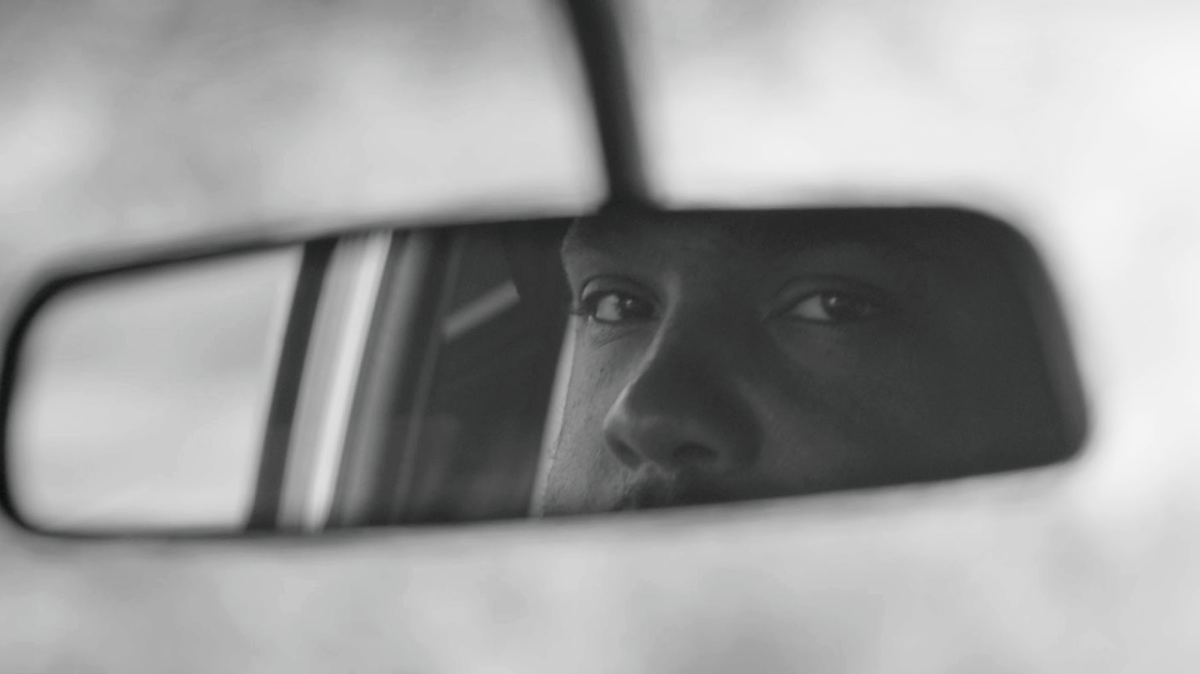
The 2022 Tribeca Festival was finally back in person, and there was much hugging, partying and clustering to make up for lost time. As a FOMO machine, it’s pretty good; there’s way too much going on at any one time. Films, of course, but also games, television, immersive installations and projects, audio, live performance, and a daily round of panels.
Tribeca’s huge doc selection (70 films) included plenty of celebrity and performance works, as well as films sure to attract the obsessed and sensation-seeking. Mixed in were films that left us thinking, wondering and wanting more.
Patricia Aufderheide
A true treasure of the festival, for me, was Violet Du Feng and Zhao Qing’s Hidden Letters, which will make its way to Independent Lens in 2023. Hidden Letters is an extraordinary film: masterfully conceived, strategically designed and highly crafted.
It concerns Nushu, a once-secret writing system by and for generations of Chinese women who survived lives of disenfranchisement and oppression with the power of sisterhood. Nushu was only recently made public, and the current government wants to celebrate and promote it. Feng follows three women: Two millennials learning Nushu and their mentor who learned it while it was still a secret system. The millennial women were raised by parents who had learned the importance of women’s rights and full participation during and after the Cultural Revolution. Their older mentor was never educated, endured a forced marriage, and found in Nushu a solace for her pain. Their experience reveals the contradictions embedded within the promotional project.
Nushu is a tool of secret sisterhood, a tool to cope with and endure oppression. As such, it’s easily exploited to reinforce patriarchy. And indeed, promotional efforts, largely led by men, seem to do just that. One entrepreneur designs men’s clothing with Nushu writing on them; another designs a Nushu-decorated pair of chopsticks that conveniently can be turned into nunchuks. A man praises Nushu for its capacity to reinforce women’s obedience, acceptance and resilience. When the women make presentations, the men catcall and give them an appraising eye. The women, meanwhile, exhibit their own internalization of patriarchy. One millennial woman is now divorced, after aborting a female fetus at six months because her husband wanted a boy. The other gets engaged to a man who seems progressive, until he dismisses her Nushu interest as a mere “hobby” they can’t afford when starting a family.
Feng and Qing give us an uncommented but highly pointed close-up look at the contradictory meanings of Nushu today, from the perspective of the women they follow. They capture some extraordinarily revelatory moments, which need no parsing. The female participants permit them to capture their vulnerability, their insecurity, their doubts.
Feng, who took lead as director, doesn’t pick sides, or demonize anyone for reinforcing patriarchy. Instead, she shows how systems reinforce it and engage everyone in participation, even those trying to resist. Between episodes, she provides emotionally redolent still lives of landscape and meditative moments savoring Nushu poetry, evoking the power of Nushu to bring balm to battered souls.
Feng has in the past done the seemingly impossible: To get an independently made documentary film into Chinese theaters (and ultimately on Chinese state TV as well). That’s what happened with Please Remember Me, which she produced. Its gentle observation of the fraught Chinese eldercare system actually brought policy change. In this film, she hopes to navigate two vastly different but equally encoded distribution systems: Chinese and US. The film, made with ITVS support, has a future on US public broadcasting, which has both norms and rules for acceptable broadcast fare. Meanwhile, the film is also being reviewed in the Chinese market. I can’t even imagine the three-dimensional chess involved, but the result is a film where complexity and nuance enrich without complicating a viewer’s experience.
I wasn’t the only Hidden Letters superfan. In a Tribeca Talks session, Gloria Steinem and Robin Morgan, two venerable feminist leaders, as well as poet Sarah Kay, sang its praises. Morgan celebrated its artistry, and Steinem celebrated its goal of promoting sisterhood. Kay lauded the power of poetry to make connections. Feng talked about how the film’s engagement campaign would encourage women to use the expressive medium of their choice to say what had been unsaid and share it with sisters worldwide.
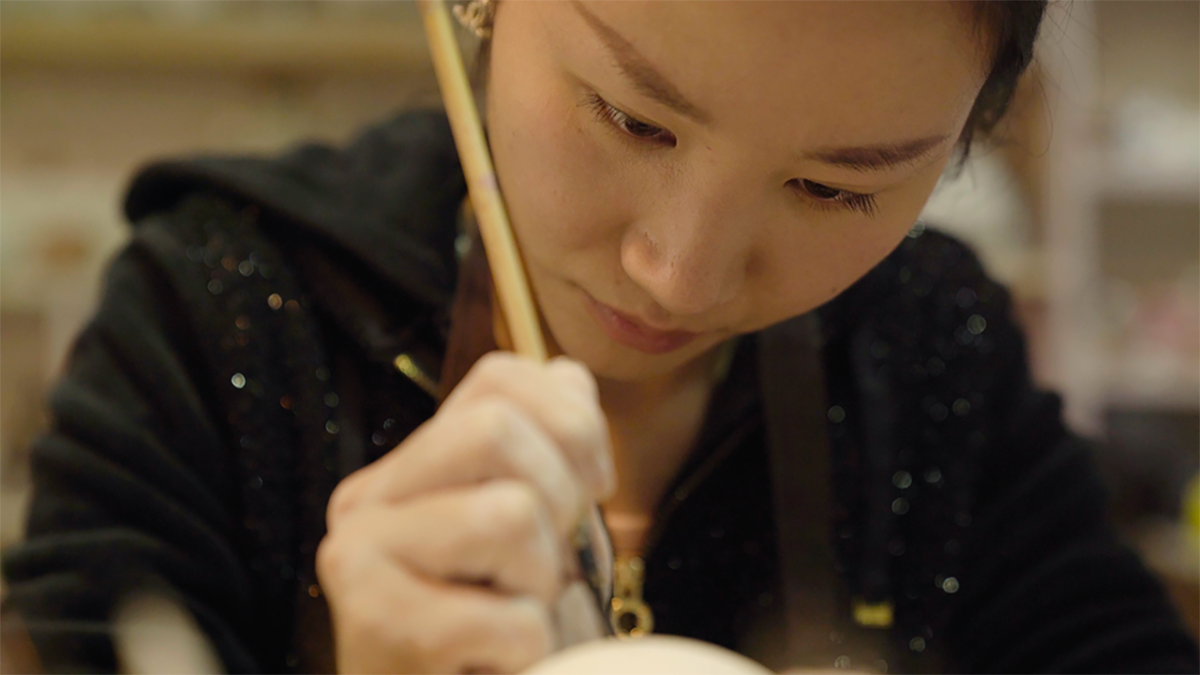
Bedatri D. Choudhury
In the documentary ecosystem, we are often asking (as we should) the question, Who gets to tell whose story?, and this year has had us questioning the ethics, ownership and accountability of more films than we’d like. I am glad that with Nausheen Dadabhoy’s An Act of Worship, there’s a new documentary that you can cite and say, “This is how you do it.”
The film—a “glorious tapestry of personal stories, vérité, archival footage and home movies”—sets off to resist a national history that has always demonized and flattened the Muslim identity. It does so, not by determining to teach American audiences how to look at Muslims as human, but by infusing every frame of the film with a keen sense of Muslim joy, fear and sadness. It presents the humanity of a community as it is, not tailored to a gaze that can process knowledge only when tempered with stereotypes.
An Act, which premieres on October 17 on POV as a part of its 35th season, puts faces to statistics that have we have become inert to, and does so with an empathy that can only come through active collaborations and a dedication to telling stories of a community that has been systemically denied the tools to document, record and narrate their own stories. Through the film’s making, Dadabhoy went on a nationwide search for home videos from American Muslim families, many excerpts of which find a place in the film. In doing so, she has created an archive that questions the ideas and images we’ve been fed about what an American looks like, and how they behave.
Dadabhoy creates a document of the American Muslim without being weighed down by a diasporic nostagia or by a self-victimizing narrative that evokes pity in the audience. With strong, political activist-protagonists, she redraws America’s historical telos and highlights the continued Islamophobia that has marked most of its modern history.
An Act is at once an act of reclaiming and reinforcing, while being celebratory of the unrelenting resilience of Muslim American comminuties. We have all written and spoken of the value of “being seen,” and I am glad the film will be “seen” on public television, hopefully in many living rooms, reckoning with the violence all our silences have condoned and encouraged.
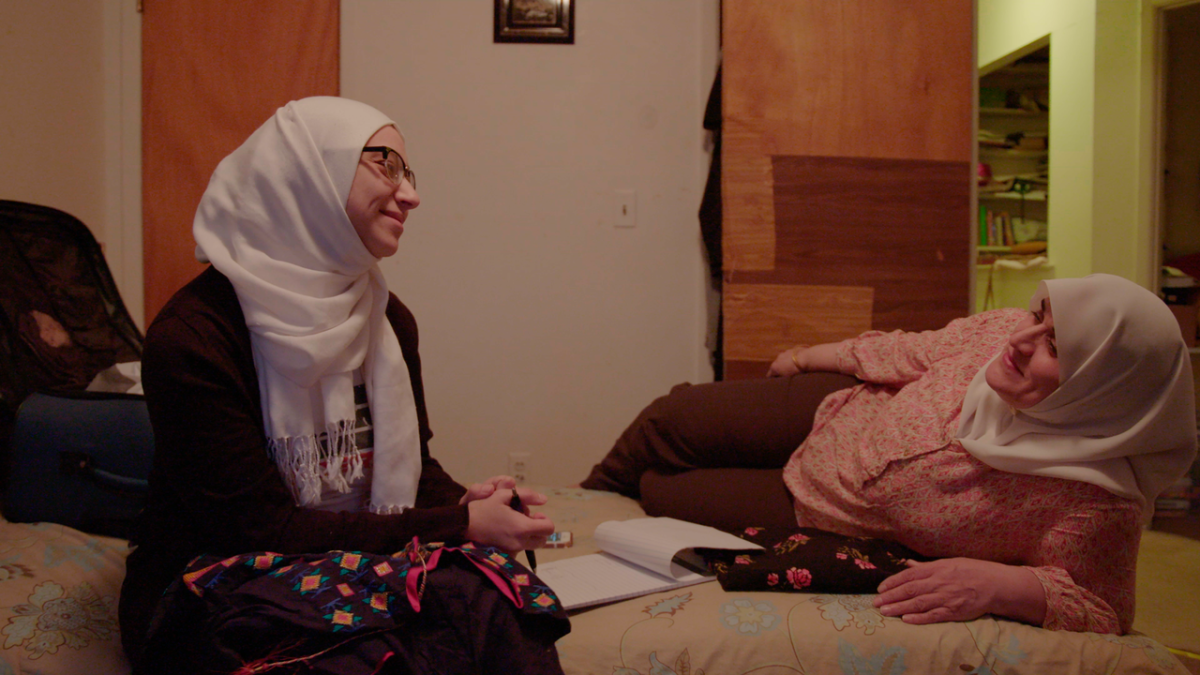
The USA is living a very different reality right now, as it was when I watched Cynthia Lowen’s Battleground at Tribeca—the Dobbs decision was still only a “leak.” Lowen’s film, with great restraint, sits through long conversations with (mostly white) “pro-lifers,” some of whom are college students, whose entire vision revolves around a “post-Roe” America, where abortion is “not just illegal but unthinkable.”
The film is somewhat of a coup, in the way it gains tremendous access to “pro-life” activists—both Christian and allegedly “atheist, feminist Democrats”—and lays bare their strategies, agenda and beliefs; and yet remains firmly pro-choice.
Battleground is an infuriating watch in the ways in which it connects the Trump presidency, the Catholic church, the Republican agenda, and the warped ways in which feminism gets (mis)construed and (ill)adapted. But it is a strategic film that makes us sit through an access into the “other side” that we probably need to be cognizant of—especially when organizing in the country today—but want no part of. Lowen takes us through a chronological timeline to show us the consistent and tireless work the “activists” have been engaged in, introduces us to organizations like Students for Life of America, and takes us to the National Pro-Life Summit. While we hear from some pro-abortion activists and health workers, the film is like a tour through the belly of the beast, and we want to keep our eyes and ears shut through it. But a grotesque need to know more guides us through it.
The film ends on a “Get organized” note, but it left me wondering if its entire muted, patient, restrained tone qualifies it to be a strong enough rallying cry. I wish the film made a bit more noise, if only to drown out the chants of “Detect a heartbeat. Protect a heartbeat.”
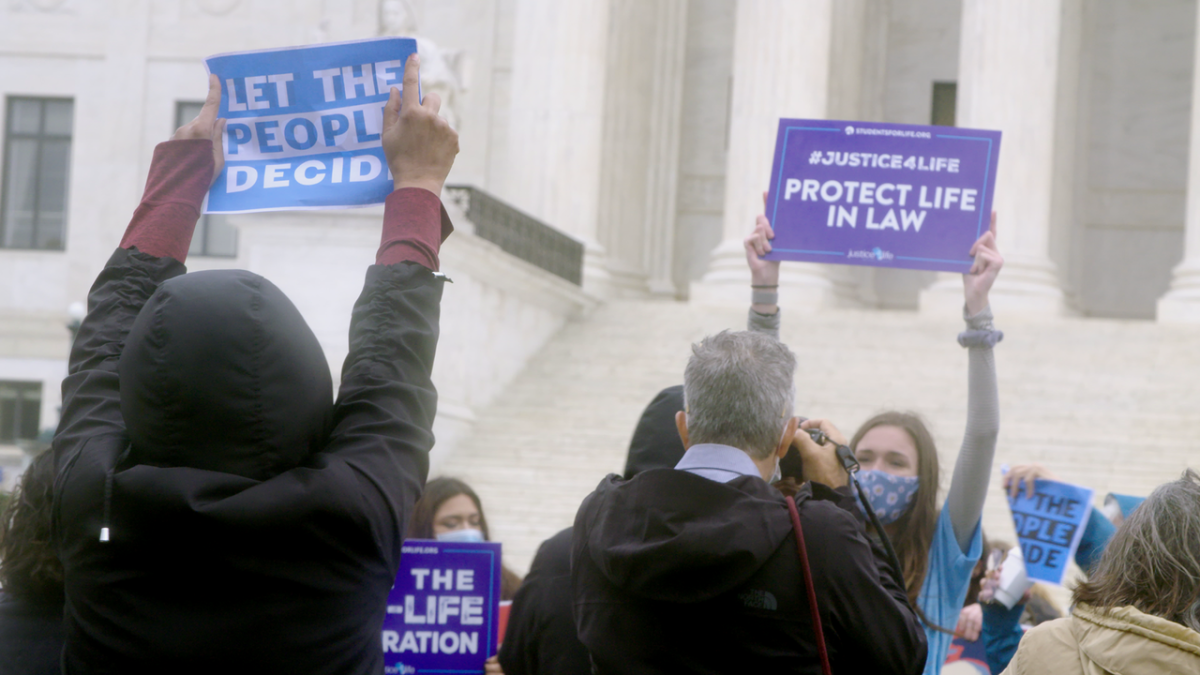
PA: Several Tribeca films demonstrated the power of storytelling to rewrite historical narratives. Geeta Gandbhir and Sam Pollard’s Lowndes County and the Road to Black Power not only revives but electrifies a too-long-hidden story about voting rights in the rural county right outside Montgomery, Alabama. There, in the wake of the Voting Rights Act, in an 80% Black county, not a single Black person was registered to vote, by no accident. The film uses heretofore-unseen photos and archival video, in combination with precious interviews with elders and experts, as well as archival interviews, to tell how a local voting-rights movement drew in the Student Non-Violent Coordinating Committee (SNCC). With SNCC facilitating local leadership, under death threats, Black voters massed not only to vote but run for office, and eventually win, under the banner of first the Black Panther Party, then the Democratic Party. But, as the ending moments of the film soberly remind us, the struggle has only begun. Civil rights activist Ruby Sales has the last word, when she argues that American democracy has always been white supremacist, without room for Black power: “We did not seriously consider, What does it mean to integrate into a burning house?”
Other historical films also reframe and rewrite historical narratives. Pratibha Parmar’s My Name Is Andrea relocates Andrea Dworkin in the history of American white feminism. Dworkin was long pigeonholed as a pleasure-hating militant, who waged war on porn. The film recovers her core demand that women be able to live lives as full human beings. The film brings back to life her charismatic combination of anger and humor, just as it shows her unafraid to be strident and impatient. Johanna Hamilton and Yoruba Richen’s The Rebellious Life of Mrs. Rosa Parks, which will soon be streaming on Peacock, recovers the complexity of a tireless advocate for criminal justice reform, for reproductive rights, for respect. And it does so by leaning on the words of Mrs. Parks herself.
Jesse Short Bull and Laura Tomaselli’s Lakota Nation v. United States speaks in direct address to non-Indigenous Americans. The film establishes the central spiritual role of the Black Hills to the Indigenous people of the region, and carefully, in a calm tone strategically dissonant with the horrifying information, describes cycles of persecution and pushback, as Lakota people leverage the judicial system to claw back land rights. That story further reveals the way the judicial system has functioned to break treaty rights and sabotage their land claims. It brings us up to the protests at Standing Rock in protection of water quality for all. “This country has only gotten better when people resisted the powers that be,” an activist asserts—a phrase echoed in other revisionist history films at Tribeca this year.
Each of these films drew upon intensively researched scholarship, and most acknowledge their debt to scholars in doing the extensive research that allows documentarians to create a narrative not only compelling but reliable.
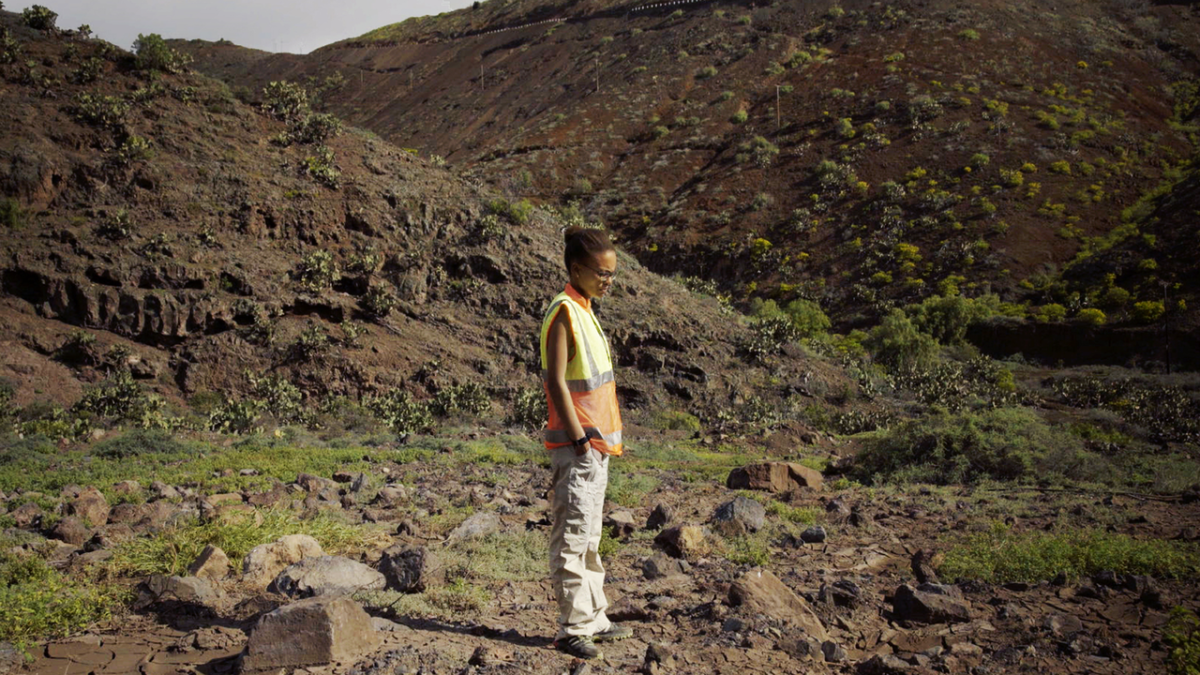
BDC: “I am standing on the most significant trace of trans-Atlantic slave trade and there is nothing here to show that…how could you know if no one tells you or reminds you?,” activist Annina van Neel’s voiceover is heard in Joseph Curran and Dominic Aubrey de Vere’s A Story of Bones, as we see her walking on the island of St. Helena, home to Napoleon’s grave, and an unmarked mass burial ground of an estimated 9,000 formerly enslaved Africans. She arrived on the island as the chief environmental officer on a proposed airport project, which was shelved for lack of security. Also shelved was a reburial project for 325 human remains that were retrieved by archaeologists.
As van Neel fights to provide a respectful burial for these remains in an island where a white colonizer’s grave serves as a huge tourist attraction, she exposes age-old faultlines of race and slavery that runs through Britain’s history. As van Neel’s story finds resonances in the work of American activist Peggy King Jorde (who was instrumental in establishing the African Burial Ground National Monument at New York’s 290 Broadway), audiences begin to form connections between histories of colonialism and slavery throughout the world—across continents, cultures and histories. A Story makes an attempt to redress the way we have learned and taught histories, and the way we have prioritized white colonial histories over our own (as people of color). The film is a resistance to that reductive history and an insistence on telling our histories, and it (the film argues) begins with respecting the dead, our ancestors, who have been denied their place in the history our books teach us.
I have also been very appreciative of the way communities—especially, communities of color—are using the documentary form to turn the lens on themselves and examining how they themselves end up replicating the power structures that disempower them.
So Yun Um’s directorial debut Liquor Store Dreams talks to inter-generational “liquor store babies”—people born to Korean parents who run liquor stores in largely Black and Brown neighborhoods in Los Angeles. Through the film, the filmmaker speaks to her father and her friend Danny (who runs a liquor store that he transforms into a community hub) as she examines a “generation gap” relating to career choices, but also questions the anti-Blackness that pervades among Korean Americans. She draws a connection with the murder of Latasha Harlins in 1991, and then to the 1992 uprising following the acquittal of LA police officers for beating Rodney King and the subsequent looting of Korean businesses. Liquor Store Dreams of course moves away from the “model minority” trope Asian Americans are reduced to, but also creates space for community building—a coming together of communities of color as they oppose and fight white supremacy that disempowers all of us.
Hazing, by Byron Hurt, emerges out of hiss discomfort with the legacy of BGLOs (Black Greek Letter Organizations)—an association that he gained a much-loved community from but also one that makes him aware of the inhuman scale of violence these communities have perpetrated, that has resulted in the psychological harm and deaths of hundreds of young men and women in colleges across the country.
Hurt questions his own loyalties as he speaks to his fraternity brothers—both his contemporaries and people who came before and after him—and complicates the ideas of masculinity (especially Black masculinity) and loyalty that fraternities and their pledges put forth. It is heartbreaking to hear parents and family members of people who have died from hazing rituals, but the film also provokes us to question the ways in which we, as a society, look at the concept of belonging. It asks, Why do we live in a society that can’t let people—especially young people of color—feel like they belong without having to kill themselves?

PA: The field-wide conversation about ethics and values in documentary filmmaking, particularly in a highly racialized society, was reflected as well at Tribeca. At a town hall following the screening of Subject, participants in documentaries described how, for good or ill, the experience had changed their lives forever. They called for mental-health support, a participant advocate, and resources to help them understand what they were getting into.
In a Tribeca Talks session, Dr. Kameelah Rashad, the executive producer of Subject, spoke kindly but clearly to filmmakers about the need to ask who is the best person to make a film. Too often, she said, stories of minoritized people have been misunderstood by privileged storytellers. She asked filmmakers to ask themselves if they were the best people to tell a particular story. “And if you are a white person who feels threatened by that question, then my psychology training kicks in, and I have to ask you, What does that bring up for you?”
Rodrigo Reyes’ Sansón and Me elegantly addresses a familiar ethical challenge: How to handle reenactment without misleading the viewer? The film vivifies a decade of correspondence between Reyes and Sansón, an undocumented prisoner for whom he had served as translator during his trial. Never permitted to interview him, Reyes employs a stand-in (one of his relatives), who uses Sansón’s words. The viewer gradually understands the strategy, and in the process understands the level of Sansón’s disenfranchisement and abandonment. As well, throughout the film Reyes and Sansón discuss the nature of their relationship, openly showcasing its power implications.
Many Tribeca documentaries this year were loaded with clips—music, television, films, newspapers and magazines. Historical films, biographies, current affairs, and cultural criticism all draw upon these copyrighted references. For instance, The YouTube Effect, Alex Winter’s latest activist essay on tech subjects, efficiently and accurately describes the social and economic consequences of YouTube’s extraordinary reach and opaque practices, pushing for regulation. The film makes its case with a host of clips drawn from burning issues in the news.
The great majority of the uses in films that lavishly employ clips these days are made under the copyright doctrine of fair use—something that was mostly unavailable to filmmakers before they created a consensus document around best practices in 2005 (full disclosure: Peter Jaszi and I helped them do that). The document helped errors and omissions insurers understand actual risk, and they now all routinely insure for fair use. (Celebrity films often still depend on permissions from the celebrities, though.)
The effects are not only perceptible in budgets, as filmmaker Stuart Samuels explains. His The Lost Weekend: A Love Story, made with Even Brandstein and Richard Kaufman, recovers the lost history of John Lennon’s 18-month affair with May Pang, picking up Pang’s perspective. He could not count on access to materials from Yoko Ono or others in the Beatles orbit. “Without fair use, historical docs would just be another way to make ‘official history,’” he says. “This film illustrates how documentary films on pop culture subjects can stand equally as history with published works by scholars, historians and pop culture critics. In a period where pop culture assets are owned and controlled-through copyright, independent, ‘unofficial’ interpretations can break through the public and critical consciousness.”
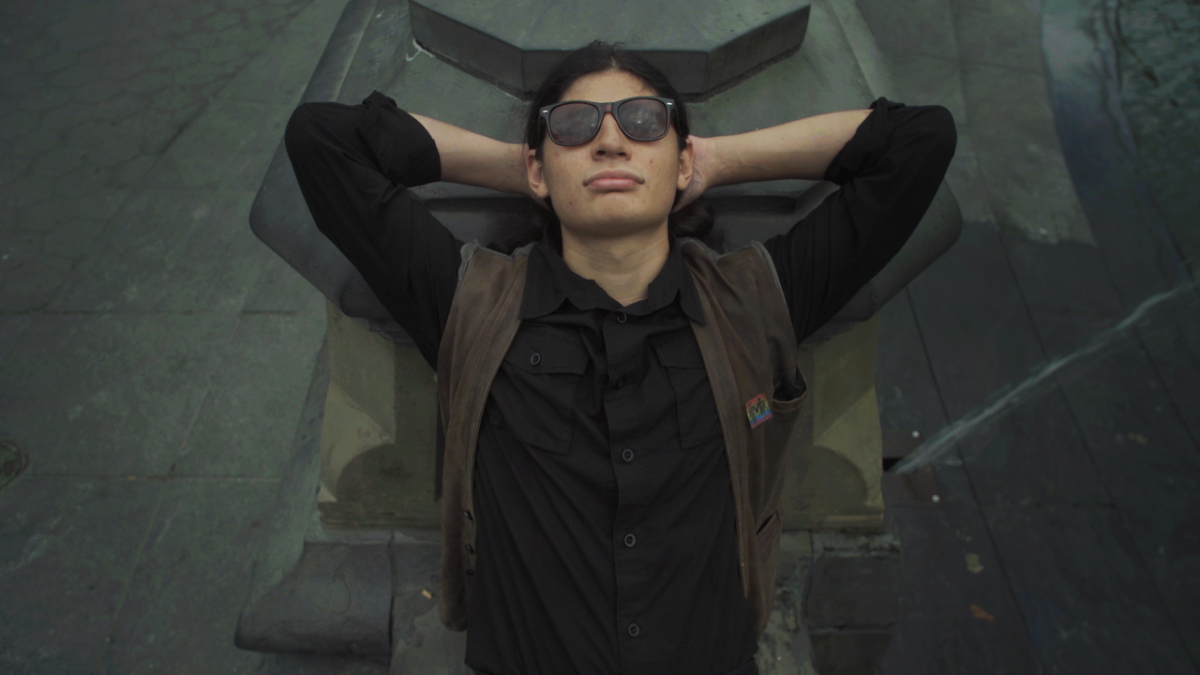
Kristy Guevara-Flanagan’s Body Parts also demonstrates the importance of fair use as an anti-private censorship tool. The well-made, well-argued film shows viewers the realities of creating intimate scenes on film, and frames that discussion within an anti-patriarchal analysis. The film has a clear action agenda, including the need for intimacy coordinators, clearer and more transparent contracts, and better labor conditions generally. The film features more than a thousand archival clips, almost all of them fairly used. “We would not have made this film without having had a strong sense of how fair use could be applicable in advance,” producer Helen Hood Scheer told me. “We always knew we wanted to play with the archive: its patterns and tropes as well as its deviations. And we wanted to make sure our film drew from across the decades, sometimes in surprising juxtapositions.” The filmmakers’ more creative uses, which went beyond simple illustration, underwent a closer scrutiny to determine that the use was truly transformative.
Patricia Aufderheide is University Professor in the American University School of Communication in Washington, D.C.
Bedatri D. Choudhury is Managing Editor of Documentary Magazine.




